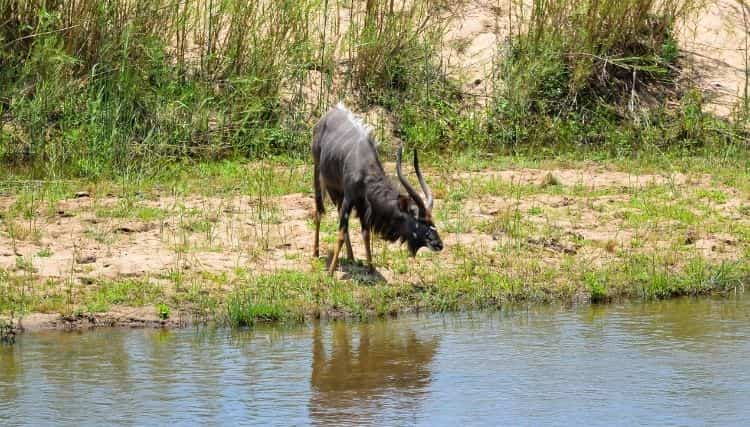
If you’ve ever wanted to know all there is to know about greater kudu interesting facts, then this guide is for you.
What İs Greater Kudu Antelope?
The Greater Kudu (Tragelaphus strepsiceros) is a large antelope species found in eastern and southern Africa. It is one of the most majestic and iconic antelopes, known for its impressive size, unique spiral horns, and striking markings.
What is Greater Kudu Antelope Size?
Greater Kudus are characterized by their large size, with males standing around 140-160 cm (55-63 inches) tall at the shoulder and weighing between 190-270 kg (420-600 lbs). Females, known as cows, are smaller, weighing around 120-210 kg (260-460 lbs). Both males and females have reddish-brown coats with thin white vertical stripes along their bodies.
The most distinctive feature of the Greater Kudu is its impressive spiral horns. Only males have horns, which can grow up to 1.8-2.5 meters (6-8 feet) long. The horns have a twist of 2.5 turns and can reach impressive lengths, making them a prized trophy for hunters.
Where Are Greater Kudu Antelope Found?

Greater Kudu (Tragelaphus strepsiceros) antelopes are found in eastern and southern Africa. They have a wide distribution across several countries in the region. Here are some of the countries where Greater Kudu can be found:
-
South Africa: Greater Kudus are found in various regions of South Africa, including national parks and game reserves. They can be seen in areas such as Kruger National Park, Hluhluwe-iMfolozi Park, Addo Elephant National Park, and others.
-
Namibia: Greater Kudus inhabit different parts of Namibia, particularly in areas with suitable woodland and savanna habitats. National parks like Etosha National Park and Namib-Naukluft Park are known to have populations of Greater Kudu.
-
Zimbabwe: Greater Kudus can be found in Zimbabwe, primarily in national parks and wildlife reserves. Places like Hwange National Park and Mana Pools National Park provide suitable habitats for these antelopes.
-
Botswana: Greater Kudus are present in various regions of Botswana, including Chobe National Park, Okavango Delta, and Moremi Game Reserve. These areas offer a mix of woodlands and open plains, which are suitable for the species.
-
Tanzania: Greater Kudus can be found in some parts of Tanzania, particularly in areas with diverse habitats such as Serengeti National Park, Ngorongoro Conservation Area, and Selous Game Reserve.
-
Kenya: In Kenya, Greater Kudus can be spotted in certain wildlife reserves and national parks like Maasai Mara National Reserve, Amboseli National Park, Tsavo National Park, and others.
-
Other countries: Greater Kudus are also found in other countries such as Angola, Mozambique, Zambia, Malawi, Swaziland, and parts of eastern African countries like Ethiopia, Sudan, and South Sudan.
It’s important to note that while Greater Kudus has a relatively wide distribution, their presence and populations may vary within specific regions or habitats. They inhabit a range of habitats including woodlands, savannas, and bushy areas, adapting to different environmental conditions across their range.
What is The Greater Kudu Antelope Habitat?
The Greater Kudu (Tragelaphus strepsiceros) inhabits a variety of habitats within its range in eastern and southern Africa. Here are the main types of habitats where Greater Kudus can be found:
-
Woodlands: Greater Kudus are commonly found in woodland areas, including both open and dense forests. They can be observed in habitats such as miombo woodlands, acacia woodlands, and riverine forests. Woodlands provide cover and a diverse range of browse plants for the antelopes.
-
Savannas: Greater Kudus are well adapted to savanna environments, which are characterized by a mix of grassland and scattered trees or shrubs. They can be found in both open grassy savannas and savannas with more dense vegetation. Savannas provide a variety of food sources and some cover for the antelopes.
-
Bushland: Greater Kudus are known to inhabit bushy areas, which are characterized by dense shrubbery and thickets. These habitats often occur on the edges of woodlands or in transition zones between different vegetation types. Bushland provides cover and browses plants for the antelopes.
-
Riparian Zones: Greater Kudus are often associated with riparian zones, which are areas along rivers, streams, and watercourses. These habitats provide a mix of vegetation types, including grasses, shrubs, and trees, which are attractive to Greater Kudus for both food and water resources.
-
Mountainous Areas: In some regions, Greater Kudus can be found in mountainous areas, particularly in highland habitats with suitable vegetation and terrain. These habitats may offer more rugged and challenging environments for the antelopes.
It’s worth noting that the specific habitat preferences of Greater Kudus can vary across their range and may be influenced by factors such as local vegetation types, availability of water sources, and the presence of predators. The antelopes are adaptable and can occupy a range of habitats as long as they provide sufficient food, water, and cover.
What is The Physical Description Of Greater Kudu Antelope?
The Greater Kudu (Tragelaphus strepsiceros) is a large antelope species known for its distinctive physical characteristics. Here is a description of the physical features of the Greater Kudu:
-
Size: The Greater Kudu is one of the largest antelope species. Males (bulls) are significantly larger than females (cows). Bulls typically stand about 140-160 cm (55-63 inches) tall at the shoulder and can weigh between 190-270 kg (420-600 lbs). Cows are smaller, weighing around 120-210 kg (260-460 lbs).
-
Body Shape: Greater Kudus have a robust and muscular build. They have a sloping back and a prominent hump at the shoulders, giving them a distinctive profile. Their neck is long and slender, allowing for agile movement through dense vegetation.
-
Coat: The coat of the Greater Kudu is short and dense. It is reddish-brown, which helps them blend into their natural surroundings. The coat is marked with thin white vertical stripes that run along the body, enhancing their camouflage.
-
Spiral Horns: One of the most striking features of the Greater Kudu is its impressive spiral horns. Only males possess horns, which can grow to lengths of around 1.8-2.5 meters (6-8 feet). The horns have a distinctive spiral shape with 2.5 twists. They are grayish and have prominent ridges or grooves.
-
Facial Features: The face of a Greater Kudu is long and narrow, with a tapered muzzle. The forehead is flat, and the eyes are large and expressive. They have prominent ears that are often pointed forward, helping them detect sounds and movements in their environment.
-
White Chevron: Both males and females have a white chevron-shaped patch on their faces between the eyes and the nose. This white marking is believed to be important for social signaling and recognition among individuals.
-
Tail: The tail of a Greater Kudu is relatively long and has a tuft of black hair at the end. The tail is often held upright when the animal is in motion, providing a visual signal to other individuals.
These physical characteristics contribute to the majestic appearance of the Greater Kudu, making it one of the most iconic and admired antelope species in Africa.
Greater Kudu Antelope Reproduction -Breeding
The breeding and reproduction of Greater Kudu (Tragelaphus strepsiceros) involve specific behaviors and patterns. Here is an overview of their breeding and reproductive characteristics:
-
Mating Season: The mating season for Greater Kudus can vary depending on the region, but it generally occurs during specific times of the year. In some areas, it may be influenced by the availability of food and water resources.
-
Male Display and Competition: During the mating season, male Greater Kudus engage in various displays and behaviors to attract females and establish dominance over other males. These displays include vocalizations, posturing, lateral displays of their horns, and sparring with other males. The size and quality of their horns play a significant role in asserting dominance and attracting females.
-
Female Choice: Female Greater Kudus select mates based on several factors, including the displays and dominance of males. The size, health, and quality of the male’s horns, as well as his overall condition, can influence a female’s choice of mate.
-
Mating Rituals: Once a male has successfully attracted a female, mating rituals take place. These rituals may involve the male following the female, performing courtship displays, and engaging in gentle nudging or touching.
-
Gestation: After successful mating, the female Greater Kudu has a gestation period of approximately 7-8 months. During this time, the fertilized egg develops within the female’s uterus.
-
Birth: Female Greater Kudus typically give birth to a single calf, although twins can rarely occur. The birth usually takes place in a secluded area away from the herd, protecting the newborn. The calf is born with a camouflage coat and remains hidden in vegetation for several weeks to avoid predators.
-
Maternal Care: The female Greater Kudu takes on the responsibility of raising and caring for the calf. She will nurse the calf, groom it, and fiercely protect it from potential threats. The calf remains with its mother for several months, gradually becoming more independent.
-
Sexual Maturity: The age at which Greater Kudus reach sexual maturity can vary, but generally, females become sexually mature between 1.5 to 2 years of age, while males mature later at around 3 years of age.
The breeding and reproductive behaviors of Greater Kudus contribute to the survival and continuation of the species. The displays and competition among males, as well as the female’s choice of a suitable mate, ensure genetic diversity and the passing on of desirable traits to future generations.
How Long Does A Greater Kudu Antelope Live?
The lifespan of a Greater Kudu (Tragelaphus strepsiceros) can vary depending on various factors, including the quality of its habitat, predation pressure, and access to resources. In the wild, Greater Kudus generally have an average lifespan of around 8 to 12 years. However, under optimal conditions with reduced threats and access to ample resources, they can live up to 15 years or slightly longer.
In captivity, where they are protected from predators, provided with appropriate nutrition, and receive veterinary care, Greater Kudus have the potential to live significantly longer. In some cases, individuals in captivity have been known to live into their late teens or early twenties.
It’s important to note that these lifespan estimates are averages, and individual Greater Kudus may vary in terms of their longevity. Factors such as disease, predation, habitat degradation, and human-induced threats can all impact the lifespan of Greater Kudus in the wild.
What Does Greater Kudu Food?
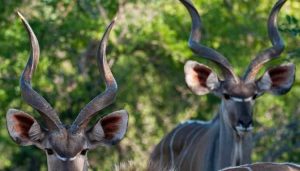
Greater Kudus (Tragelaphus strepsiceros) are primarily browsers, which means they primarily feed on leaves, shoots, fruits, and bark. Here’s an overview of the types of food that Greater Kudus consume:
-
Leaves and Foliage: Greater Kudus feed on a variety of leaves from different plant species. They consume both fresh green leaves and browse on dried leaves when fresh vegetation is scarce. They have a selective feeding behavior, choosing leaves that are high in nutrients and avoiding those that are toxic or unpalatable.
-
Shoots and Twigs: The antelopes also consume tender shoots and twigs from various shrubs and trees. They can reach high branches using their long necks and agile movements, allowing them to access vegetation that is not readily available to other herbivores.
-
Fruits and Seeds: When in season, Greater Kudus feed on a variety of fruits and seeds. They may consume fallen fruits from trees or actively seek out fruit-bearing trees and shrubs. This behavior can contribute to seed dispersal and plays a role in maintaining plant diversity within their habitats.
-
Bark and Woody Plants: In times of limited food availability, Greater Kudus may resort to consuming bark and woody plant parts. This behavior is more common during periods of drought or when other food sources are scarce. They use their strong teeth and jaws to strip bark or chew on woody stems.
-
Grasses and Herbs: While Greater Kudus are primarily browsers, they can also include grasses and herbs in their diet, particularly during the dry season when other food sources may be limited. Grasses are not a major component of their diet but can supplement their nutritional needs.
The feeding preferences of Greater Kudus can vary based on the availability of food sources and the specific region or habitat they inhabit. They have specialized adaptations in their digestive system that allow them to efficiently process a wide range of plant materials, including fibrous and less nutritious vegetation.
It’s worth noting that Greater Kudus are selective feeders and can exhibit preferences for specific plant species or parts of plants. Their feeding behavior plays a crucial role in shaping plant communities and maintaining the balance of ecosystems in their habitats.
Greater Kudu Antelope Anti-predator Adaptations
Greater Kudus (Tragelaphus strepsiceros) have evolved several anti-predator adaptations to help them avoid or deter potential predators. Here are some of their notable adaptations:
-
Camouflage: The reddish-brown coat of Greater Kudus, marked with thin white vertical stripes, provides effective camouflage in their natural habitats, such as woodlands and savannas. This coloration helps them blend into the surrounding vegetation, making it harder for predators to spot them.
-
Vigilance and Alertness: Greater Kudus are vigilant animals. They have excellent senses, including keen eyesight and hearing, which allow them to detect potential threats in their environment. They can quickly detect the presence of predators and respond accordingly by fleeing or taking evasive actions.
-
Speed and Agility: Greater Kudus are adept runners and possess great agility. When faced with a predator, they can flee at high speeds, reaching up to 70 km/h (43 mph) in short bursts. Their long legs and muscular bodies enable them to navigate through various terrains and obstacles, increasing their chances of escaping predators.
-
Acute Hearing: Greater Kudus have large, well-developed ears that are capable of detecting subtle sounds. They can pick up the slightest rustle or movement, allowing them to become aware of potential threats from predators in the vicinity.
-
Horns and Defense: Male Greater Kudus possess impressive spiral horns, which can reach lengths of up to 1.8-2.5 meters (6-8 feet). These horns serve as a defensive mechanism against predators. When threatened, a Greater Kudu may lower its head and use its horns to strike, ward off, or potentially injure predators, providing a means of self-defense.
-
Group Living: Greater Kudus often live in small herds or as solitary individuals. Living in groups can provide them with safety in numbers, as more individuals can be on the lookout for predators, increasing the chance of detecting threats early. Additionally, group members may engage in alarm calls or defensive behaviors to alert others to potential danger.
-
Elusiveness and Hiding Behavior: When faced with immediate danger, Greater Kudus can use their agility and knowledge of their environment to escape and seek cover. They may retreat into dense vegetation, such as thickets or undergrowth, to hide from predators. Additionally, females may hide their young in concealed areas to protect them from predators.
These anti-predator adaptations help Greater Kudus increase their chances of survival and minimize the risk of falling victim to predators in their natural habitats. By combining their physical attributes, keen senses, and behavioral strategies, they have evolved to successfully navigate their predator-prey interactions.
What is Greater Kudu Antelope Role İn The Ecosystem?
The Greater Kudu Antelope plays an important role in the ecosystem because it disperses seeds from plants that grow in its habitat. It also helps to maintain healthy plant growth by eating certain types of plant leaves.
Greater Kudu Antelope Conservation Status
The conservation status of the Greater Kudu (Tragelaphus strepsiceros) is currently assessed as “Least Concern” by the International Union for Conservation of Nature (IUCN). However, it’s important to note that the conservation status can vary across different regions and populations within the species’ range.
Here are some key factors related to the conservation status of the Greater Kudu:
-
Population Trends: Overall, the Greater Kudu population is considered stable, and in some areas, it may even be increasing. However, localized declines and population fragmentation can occur due to habitat loss, poaching, and human-wildlife conflicts.
-
Habitat Loss and Fragmentation: The conversion of natural habitats to agricultural land, expansion of human settlements, and infrastructure development pose significant threats to the habitat of Greater Kudus. The loss and fragmentation of their preferred woodlands, savannas, and riparian zones can disrupt their movement patterns and access to resources.
-
Poaching and Illegal Wildlife Trade: Greater Kudus are targeted by poachers for their meat, hides, and horns. Although not as heavily targeted as some other African antelope species, illegal hunting and wildlife trade can still pose a threat to local populations.
-
Human-Wildlife Conflict: Encroachment of human activities into wildlife habitats can lead to increased conflicts between humans and Greater Kudus. This can occur through competition for resources, crop raiding, or predation on livestock, leading to retaliatory killings and negative attitudes toward the species.
-
Conservation Efforts: The conservation of Greater Kudus involves protected areas, national parks, and wildlife reserves where they are legally protected. Efforts are made to manage their habitats, prevent illegal hunting, and promote sustainable land use practices. Additionally, community-based conservation initiatives and education programs aim to reduce human-wildlife conflicts and raise awareness about the importance of conserving these antelopes.
While the Greater Kudu is not currently considered at immediate risk of extinction, ongoing monitoring, habitat protection, and conservation actions are necessary to ensure the long-term survival of the species and address the localized threats they face. Continued efforts to mitigate habitat loss, control poaching, and promote sustainable coexistence between humans and Greater Kudus are crucial for their conservation.
How Many Greater Kudu Antelope Are Left İn The World?
There are fewer than 500,000 Greater Kudu Antelope left in the world today. These antelopes are found in the savannas of East Africa and they undergo a lot of threats from poaching, habitat loss, conflict with humans, and disease.
How Fast a Greater Kudu Antelope Run?
The Greater Kudu (Tragelaphus strepsiceros) is known for its impressive speed and agility when it comes to evading predators. While there can be variations in individual capabilities, the general running speed of a Greater Kudu is estimated to be around 60-70 km/h (37-43 mph) in short bursts. These bursts of speed allow them to quickly escape from predators or dangerous situations.
It’s important to note that their running speed is influenced by various factors, including the terrain, distance traveled, and the urgency of the situation. Additionally, factors such as age, health, and fitness levels can also impact the speed at which an individual Greater Kudu can run.
Overall, the Greater Kudu’s ability to reach high speeds in short bursts, combined with their agility and maneuverability, helps them navigate through their natural habitats and evade potential threats.
Greater kudu dangerous
Greater Kudus (Tragelaphus strepsiceros) are generally not considered dangerous to humans. They are shy and elusive animals that prefer to avoid confrontations rather than engage in aggressive behavior. However, like any wild animal, they can become defensive if they feel threatened or cornered.
Here are a few scenarios in which a Greater Kudu may exhibit potentially dangerous behavior:
Self-Defense: If a Greater Kudu feels threatened or cornered, especially when protecting their young or during the breeding season when males may be more territorial, they may exhibit defensive behaviors. This can include lowering their head, using their impressive horns to strike, or charging at a perceived threat. While this behavior is primarily a defense mechanism, it can pose a danger if a person is nearby and unable to retreat.
Accidental Encounters: In rare instances, if a human accidentally comes into proximity with a Greater Kudu, particularly in dense vegetation or unexpected encounters, the animal may react defensively out of surprise or confusion. It’s important to maintain a safe distance and give the animal space to retreat without feeling threatened.
Wild Animals in General: It’s crucial to remember that any wild animal, regardless of species, can be potentially dangerous if they feel threatened, cornered, or provoked. It is always advisable to observe animals from a safe distance, respect their space, and avoid actions that may agitate or provoke them.
In general, when encountering Greater Kudus or any other wild animal, it is recommended to exercise caution, maintain a respectful distance, and avoid any actions that may agitate or provoke the animal. It is best to appreciate these animals in their natural habitat from a safe and responsible distance. If visiting areas where wildlife is present, following guidelines and regulations set by local authorities and wildlife conservation organizations is crucial for personal safety and the well-being of the animals.
What caliber is kudu?
The 30-06 cartridge is one of the most popular hunting rounds in the world. It has an effective range of up to 500 yards and can kill a kudu at any range. The 30-06 rifle is a favored weapon because it can be loaded with a variety of different cartridges.
How much does it cost to hunt a kudu in South Africa?
Hunting a kudu can be a very expensive proposition and one should always try to make the most of their hunting experience. Hunting packages in South Africa cost on a 1X1 basis and the total cost of hunting a kudu is $5,450.
What is a kudu baby called?
A baby kudu is called a ‘calf’, and calves remain in hiding and only come out when their mother calls them out. They grow quickly, reaching sexual maturity by 18 months old.
What is a group of kudu called?
A group of kudu is called a herd. The word “kudu” comes from the Zulu language and means “to walk in single file.”
Can you shoot a kudu?
If you are wondering whether or not it’s possible to shoot a kudu, the answer is yes. The kudu is an antelope that can grow up to 1.8 meters tall and weigh up to 450 kilograms. They have very thick skin and their horns are about three feet long.
How do you polish a kudu horn?
The most important factor in judging the length of a kudu horn is its width at the base. The larger this width, the longer it will be. As an example, the horns of an adult male are typically about 2 feet long and 1 foot wide at their bases; however, they can grow up to 3 feet long and 1 foot wide at their bases in exceptional cases.
İs Greater Kudu Antelope Aggressive
Yes. The Greater Kudu Antelope can be aggressive when threatened or cornered. They will charge at humans and other animals without warning. This animal is also known to run away from predators by quickly running away with their head low to the ground and horns pointed forward in defense strategy.
Can Greater Kudu Antelope Swim?
The answer is yes, but they can only swim for short distances.
Where Do Greater Kudu Antelope Sleep?
Greater Kudu Antelope sleeps on the ground to avoid predators
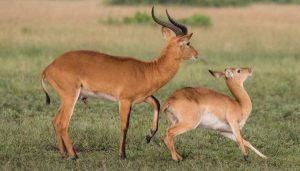

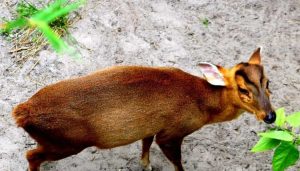
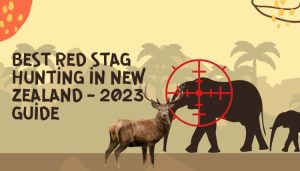

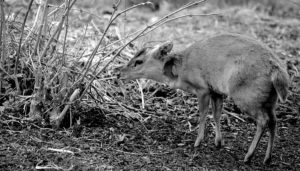
Leave a Reply